note: this answer assumes your shape is a proper polygon.
For our purposes, we'll define an equilibrium position as one where the Center of Mass is directly above a point that is between the leftmost and rightmost ground-contact points of the object (assuming the ground is a flat surface perpendicular to the force of gravity). This will work in all cases, for all shapes.
Note that, this is actually the physical definition of rotational equilibrium, as a consequence of Newtonian Rotational Kinematics.
For a proper polygon, if we eliminate cases where they stand on a sole vertex, this definition is equivalent to a stable position.
So, if you have a straight downward gravity, first find the left-most and right-most parts of it that are touching the ground.
Then, calculate your Center of Mass. For a polygon with known vertices and uniform density, this problem is reduced to finding the Centroid (relevant section).
Afterwards, drop a line from your CoM; if the intersection of the CoM and the ground is between those two x values, it's at equilibrium.
If your leftmost point and rightmost point match (ie, in a round object), this will still hold; just remember to be careful with your floating point comparisms.
Note that this can also be used to measure "how stable" an object is -- this measure is the maximum y-distance the Center of Mass can move before it is no longer within the range of the two contact points.
EDIT: nifty diagram made hastily

So, how can you use this to find all the ways it can sit on a table? See:
EDIT
The programmable approach
Instead of the computationally expensive task of rotating the shape, try this instead.
Your shape's representation in your program should probably have a list of all vertices.
Find the vertices of your shape's convex hull (basically, your shape, but with all concave vertices -- vertices that are "pushed in" -- eliminated).
Then Iterate through each of pair of adjacent vertices on your convex hull (ie, if I had vertices A, B, C, D, I'd iterate through AB, BC, CD, DA)
Do this test:
- Draw a line A through the two vertices being tested
- Draw a line perpendicular to A, going through CoM C.
- Find the intersection of the two lines (simple algebra)
- If the intersection's y value is in between the y value of the two vertices, it stable. If the y values are all equal, compare the x values.
That should do the trick.
Here is an example of the test being running on one pair of vertices:

If your shape is not represented by its vertices in your data structure, then you should try to convert them. If it's something like a circle or an ellipse, you may use heuristics to guess the answer (a circle has infinite equilibrium positions; an ellipse 4, albeit only two "stable" points). If it's a curved wobbly irregular shape, you're going to have to supply your data structure for me be able to help in a program-related way, instead of just providing case-by-case heuristics.



